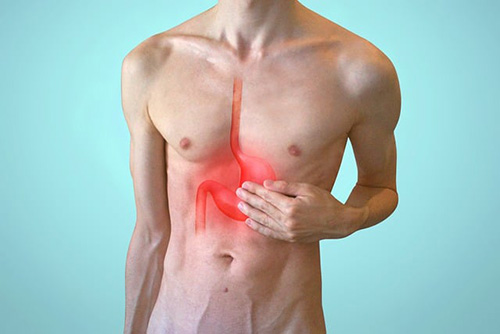Contents
(What size hiatal hernia needs surgery?) The size and symptoms of hiatal hernias, which happen when a part of the stomach pushes through the diaphragm and into the chest cavity, may vary significantly. The need for surgery for a hiatal hernia depends on several variables, including the size of the hernia, the existence and severity of symptoms, and the likelihood of complications.
Types of Hiatal Hernias

Before discussing the size consideration, realizing two primary forms of hiatal hernias exist is essential.
- Sliding hiatal hernia—This form is the most frequent. In this form, the stomach and part of the esophagus slip up into the chest. They often don’t create severe symptoms and are typically smaller.
- Paraesophageal Hiatal Hernia – Less frequent but very problematic. A portion of the stomach projects through the diaphragm and rests next to the esophagus in this kind. It might be susceptible to blood supply strangulation, which would need surgery.
Size and Symptomatology
Size is a significant consideration, but it’s not the only one when deciding if surgery is necessary. While some significant hernias may go unnoticed, other tiny ones may cause noticeable symptoms. Heartburn, regurgitation, chest discomfort, trouble swallowing, and shortness of breath are all typical signs of hiatal hernias.

What Size Hiatal Hernia Needs Surgery?
- Small Hernias – Small sliding hiatal hernias often don’t need surgical repair. If they produce symptoms, they are typically treated conservatively with dietary adjustments and drugs like proton pump inhibitors or antacids.
- Medium to Large Hernias – These are more symptomatic. Surgery may be an option if the hernia is causing extreme pain that doesn’t go away with medical treatment. Additionally, due to the possibility of complications like strangling, medium to large paraesophageal hernias may need to be surgically repaired even if no symptoms are present.
- Very Large Hernias – Because of the hazards involved, those that include a large portion of the stomach or perhaps other organs protruding into the chest are more likely to need surgical repair.
Other Considerations
- Age and Health: The patient’s general health is essential. The possible advantages of surgery may not exceed the hazards if a patient has serious health issues.
- Complications: Regardless of the size of the hernia, surgery may be required if it becomes strangulated or if there is evidence of severe gastroesophageal reflux disease (GERD) unresponsive to treatment.
- Surgeon Experience: Always seek the advice of a surgeon specializing in fixing hiatal hernias. Their expertise will influence your decision-making process.

The Surgical Process for Hiatal Hernias
Hiatal hernia surgery, also known as fundoplication or hernia repair, involves pulling the stomach back into its normal position, repairing the hiatal defect in the diaphragm, and frequently creating a new valve apparatus at the bottom of the esophagus to prevent acid reflux. For those unsure about the procedure, it also involves repairing the hiatal defect in the diaphragm. The process may be performed laparoscopically, less invasive than an open method.
Benefits of Surgery
- Symptom Relief: Following hiatal hernia surgery, many patients report significant improvement in symptoms, including heartburn, regurgitation, and chest discomfort.
- Reduction of Complication Risks: Potentially fatal consequences like strangling or blockage may be avoided with surgery.
- Improved Quality of Life: Many patients report enhanced quality of life after surgery due to symptom alleviation and reduced medication use.
Risks and Post-Surgical Considerations
Surgery has hazards, even if it might be advantageous. Among the potential issues:
- Infection: As with any surgical operation, internal or external infection is possible.
- Bleeding: During or following the procedure, there can be bleeding.
- Difficulty Swallowing: Some patients may struggle to swallow after the procedure.
- Gas Bloat Syndrome: Patients have bloating at this time and struggle to burp or vomit.
- Recurrence: The hernia can come back, requiring further surgery.

After surgery, patients might be advised to
- Follow a prescribed diet, moving over a few weeks from liquids to soft meals and then to conventional foods.
- For a few weeks, abstain from heavy lifting and intense activity.
- Contact their surgeon to track their progress and look for any possible issues.
Hiatal hernia surgery is a complex choice considering the hernia’s size, symptoms, general health, and prospective advantages vs dangers. It’s crucial to communicate openly with medical providers and to be well-informed. Patients may take control of their health and well-being by making informed choices regarding the complexities of the illness and the various treatments.
Although size is crucial in evaluating whether hiatal hernia surgery is necessary, it is not the only one. Decision-making also heavily depends on the kind of hernia, the existence and intensity of symptoms, and the possibility of consequences. It’s critical to speak with a gastroenterologist or surgeon if you have a hiatal hernia or have already received a diagnosis to go through the best course of action for your particular case.
Health Disclaimer: The information on this website is for educational uses only and is not a substitute for professional medical advice. Always consult an authorized healthcare provider for any health concerns before using any herbal or natural remedy. We do not establish, treat, cure, or prevent any disease. Reliance on any material from this website is solely at your own risk. We are not responsible for any adverse effects resulting from the use of information or products mentioned on this website.
References
- UVA Health: https://uvahealth.com/services/gastro/hiatal-hernia
- Healthline: symptoms.https://www.healthline.com/health/how-to-treat-a-hiatal-her
- MyHealth Alberta: https://myhealth.alberta.ca/Health/aftercareinformation/pages/conditions.aspx?hwid=ut2946
- Wexner Medical Center at Ohio State University: https://wexnermedical.osu.edu/digestive-diseases/hiatal-hernia
